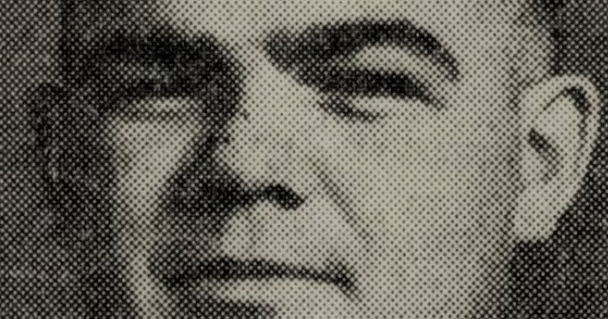A World War II pilot who was remembered for helping fellow servicemembers survive the plane crash that killed him has been accounted for, military officials said this week.
Army Air Forces 1st Lt. Charles W. McCook, 23, of Georgetown, Texas, was a member of the 22nd Bombardment Squadron (Medium), 341st Bombardment Group (Medium), 10th Air Force during World War II, the Defense POW/MIA Accounting Agency said in a news release. Before joining the military, McCook had graduated from Southwestern University and came from a family of pilots, according to local newspaper clippings gathered by the DPAA.
McCook, nicknamed “Woody,” served in China and Burma, according to newspaper clippings. He was one of 20 officers and enlisted men credited for a mission that air-dropped supplies to Allied forces battling Japanese troops in northern Burma. During his service, McCook received the Air Medal and the Distinguished Flying Cross, according to newspaper clippings.
On August 3, 1943, McCook was the armor-gunner on the B-25C “Mitchell,” conducting a low-altitude bombing raid over Meiktila, Burma, the DPAA said. The raid was meant to target the Meiktila dam and nearby Japanese barracks, according to a newspaper clipping.
Defense POW/MIA Accounting Agency
The aircraft crashed during the mission. McCook and three others aboard the plane died, but two men survived. One of the survivors, identified in newspaper clippings as Sgt. John Boyd, said the plane had been hit by an explosive gas shell while flying at a low altitude. McCook, who Boyd recalled “as the best in the business,” was able to bring the damaged plane up to an altitude that allowed Boyd and the other surviving soldier to parachute from the craft before it crashed.
Boyd said this action allowed him to survive. He and the other soldier were taken captive by Japanese forces, the DPAA said. Boyd spent two years as a prisoner in Rangoon before he was freed, according to newspaper clippings.
McCook’s remains were not recovered. He was eventually listed as missing in action. In 1947, after World War II ended, the American Grave Registration Service recovered four sets of remains from a common grave near a village in Burma, the DPAA said.
Defense POW/MIA Accounting Agency
Locals said the four sets of remains, designated X-282A-D, were from an “American crash,” the DPAA said. But the remains were not identified at the time. They were interred as “Unknowns” at the National Memorial Cemetery of the Pacific, or the Punchbowl, in Honolulu, Hawaii. McCook’s name was listed on the Walls of the Missing at the Manila American Cemetery and Memorial in the Philippines.
In January 2022, the DPAA disinterred all four sets of remains and taken to the agency’s laboratory. Dental, anthropological and isotope analyses were conducted. Other military agencies used mitochondrial DNA analysis and genome sequencing data to help identify the remains. The processes allowed the DPAA to identify one of the sets of remains as belonging to McCook.
Now that McCook has been accounted for, a rosette has been placed next to his name on the Walls of the Missing. He will be buried in his hometown in August 2025, the DPAA said.
World War II, U.S. Air Force, United States Military, Philippines, Japan
#WWII #pilot #accounted #years #credited #saving #airmans #life #deadly #crash


